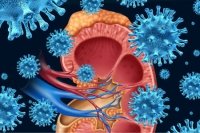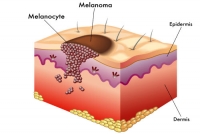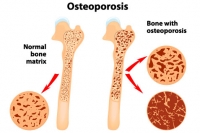08 / 18 / 2017
Despite ever increasing prescriptions for the cholesterol-lowering drugs knows as statins, cardiovascular disease continues and is expected to increase 40% worldwide by 2030. Atherosclerosis, the underlying cause of heart attacks and strokes, causes a staggering 17 million deaths each year. This disease persists because conventional medicine has consistently failed to address its root causes; instead it focuses merely on its symptoms by mechanical lowering of blood cholesterol levels, blood pressure, and blood sugar with drugs. It is now becoming evident that targeting blood cholesterol has not been successful in controlling heart disease.
07 / 06 / 2017
In the last issue of our Health Science News Page we discussed aspects of skin cancer and the damage caused by excessive sun exposure. The most common risk factor of non-melanoma skin cancer is excessive exposure sunlight. However, it is important to note that the non-melanoma skin cancers, basal and squamous cell carcinomas are not as lethal as melanoma which can also occur on areas of the skin not exposed to the sun. Sun exposure can cause free radical damage in the skin cells leading to DNA damage and skin ageing, and may eventually cause skin cancer, however, that is not the only risk factor.
06 / 25 / 2017
With the arrival of summer people become acutely aware of sun exposure, skin cancers and the use of sunscreen. Worldwide, one in three diagnosed cancers is classified under skin cancer. Basal cell carcinoma, squamous cell carcinoma, and melanoma are the most common forms of skin cancers, and malignant melanoma is the most fatal. According to the American Cancer Society, it is estimated that nearly 9,500 people in the US are diagnosed with skin cancer every day and 161,790 new cases of melanoma are estimated to be diagnosed in the US in 2017. Males over 50 and women younger than 50 are reported to have an increased risk of developing melanoma. In fact, melanoma is the second most common form of cancer in women between the ages of 15-29. The annual cost for treating melanoma has grown faster than the annual treatment costs for all other cancers combined.
06 / 13 / 2017
Worldwide, kidney cancer is one of the 10 most common cancers in both men and women. The American Cancer Society estimates 63,990 new cases of kidney cancer will be diagnosed in the US in 2017. Kidney tumors can be either benign (non-cancerous) or malignant (cancerous) and since they tend to grow quickly without any specific symptoms, they are usually removed before any diagnostic biopsy is done. Males tend to get kidney cancer twice as often as females. Common risk factors for kidney cancer include smoking, obesity, and exposure to chemicals like benzene, asbestos, and certain pesticides. Being African American or a family history of hypertension, lymphoma or kidney cancer, and certain genetic conditions further increase the risk of developing kidney cancer.
05 / 30 / 2017
Head and neck cancers are a group of tumors originating from several areas above the collarbone. They include cancers of the larynx, salivary glands, tongue, thyroid, and nasopharyngeal area. Annually there are 60,000 new cases of head and neck squamous cell carcinoma (HNSCC) in the US, and more than 13,000 deaths. Squamous cells are a type of cells found in the outer layer of the skin and in the mucous membranes and include the cells lining airways and intestines. The biggest risk factor for head and neck cancers include tobacco use and smoking (this includes the smokeless tobacco), and alcohol - all of which are highly preventable causes. Additionally, sun exposure, and occupational exposure to substances like chromium, radium, leather, and wood dust can also increase the risk of developing HNSCC. Hence, the ears, nose, and throat happen to be the most common affected areas.
05 / 15 / 2017
Roundup is a highly toxic herbicide containing the active ingredient glyphosate. Glyphosate is a non-selective herbicide which means that it kills most plants by preventing them from making certain proteins required for their growth. Monsanto produces Roundup and the seeds that grow into genetically engineered (GE) plants that are tolerant to glyphosate. Worldwide Roundup sales are approximately $6B annually. They are projected to be $9B by 2019 due to the demand created by the company’s proprietary Roundup Ready genetically modified crops. Roundup destroys all life in the soil. It kills all microbes that would typically help in plant growth by providing nutrients and protection from diseases.
05 / 01 / 2017
In the last issue of the Health Science News Page we described the causes and effects of diabetes in children. Typically, type 1 diabetes affects children. However, due to poor diet and increasing obesity, type 2 diabetes is becoming common in children. While insulin and metformin are the FDA approved drugs for diabetic children, many other drugs are also used that are not tested in the younger population and, other safer avenues of addressing diabetic-related health issues are not emphasized enough.
04 / 17 / 2017
Diabetes is one of the most common non-communicable diseases worldwide. It is no longer a disease of the ageing population in developed countries. Diabetes or pre-diabetes is increasingly being diagnosed in the younger population everywhere and most markedly in developing countries. Diabetes has reached epidemic proportions worldwide and this disease is at the forefront of public health challenges the world faces this century. The number of people around the world living with diabetes has skyrocketed in the last few decades and 422 million people were diagnosed with diabetes in 2014.
04 / 03 / 2017
Ovarian Cancer is the fifth leading cause of cancer deaths in the USA, and is the deadliest of gynecological cancers in women. According to the 2016 estimates of the American Cancer Society, 22,280 women will be diagnosed with ovarian cancer in the United States and 14,240 women will die from this disease. The main reason for such high death rate is that ovarian cancer is often diagnosed when the disease has already progressed. Unfortunately, there are no specific symptoms pointing to ovarian cancer. A woman can have an array of vague symptoms such as dull abdominal pain, feeling of fullness or bloating, changed bowel habits, indigestion, loss of appetite and weight loss. Sometimes, an abdominal mass may also be present. This non-specificity of symptoms helps explain why the majority of women are diagnosed when the cancer has already spread to the pelvis, abdominal organs, the liver and the lungs.
03 / 20 / 2017
Phytonutrients are natural compounds produced by plants for their protection. They help plants repel harmful insects, protect them from diseases, draught, ultraviolet rays, and pollutants. Until recently phytonutrients were not considered as important nutrients for humans; however, they are now thought to be necessary to sustain human life. Some examples of common phytonutrients are curcumin (which is an active component in turmeric), resveratrol (which is found in peanuts, pistachios, grapes, red and white wine, blueberries, and cocoa and dark chocolate), and quercetin (which is an active component present in red onions, apples, and peppers). It has been shown that several of these phytonutrients present in fruits and vegetables can reduce the incidence of chronic diseases such as diabetes, hypertension, atherosclerosis, and cancer.
03 / 03 / 2017
Osteoporosis - or thinning of bones- is a condition affecting 200 million people worldwide. This figure includes both women and men over 50. Approximately 75 million of those affected are in the USA, Europe, and Japan. Although postmenopausal women are more likely to develop osteoporosis, one in five men will also develop significant bone thinning in their lifetime. Osteoporosis is a disease where the bones lose density and strength which increases the risk of fractures and debilitation. Osteoporosis is the most common - yet least detected - bone metabolism disorder. A sedentary lifestyle, the use of prescription drugs such as corticosteroids, antacids (specifically, proton pump inhibitors), and psychiatric medications can cause excessive bone loss leading to osteoporosis. In the elderly, thin bones are prone to breaking and can result in hip or vertebral fractures and can increase the risk of premature death.
02 / 19 / 2017
The human skeletal system is made up of bones and joints. It provides support and mobility, and protects the body’s organs. We are born with more than 300 bones. Many of them fuse together during childhood and an adult human being eventually has 206 bones. The largest bone in the human body is the femur (thigh bone) and the smallest bones in the human body are the three bones of the middle ear. Maximum bone growth occurs during childhood and puberty and tapers off at 16-18 years of age. While the bones do not grow in size after 18-20 years, they are not stagnant, hard, and inert structures. A continuous metabolic process called bone remodeling occurs within the bones throughout our life. This is an essential lifelong process during which the bone is resorbed and formed again by specialized cells in the skeletal system. Osteoclasts break down mineralized bone and participate in the bone reabsorption process, and osteoblasts build bone. Our entire skeleton is renewed every few years and it is estimated that at any time about 20% of an adult bone is undergoing remodeling.
02 / 04 / 2017
In our last Health Science News Page, we discussed the body’s requirements for fiber and presented dietary sources. Although dietary fiber is not defined as a nutrient, and the body does not digest or absorb it, dietary fiber has a critical role in the prevention of diseases and maintaining health.
01 / 25 / 2017
“You are what you eat” is a common phrase, however, a more accurate statement is “You are what you digest.” This is because dietary nutrients will not be available for the body if they are not optimally digested and absorbed through the digestive tract. A poorly functioning digestive system leads to inadequate nutrient absorption/malnourishment and the development of various health issues such as seasonal allergies, acid reflux, autoimmune conditions like Crohn’s disease, and irritable bowel disease. Our ability to fight seasonal flu or serious infections depends upon a healthy digestive tract. Just like all other systems in our body, the digestive system requires not only macronutrients (carbohydrates, proteins and fats) and micronutrients (vitamins, minerals and amino acids), but also dietary fiber.
12 / 12 / 2016
The supplement market offers a variety of products in the form of tablets, capsules, soft gels, liquids, chewables, and powders. Each has specific applications but there is confusion about the pros and cons of each of them. Consumer education can bring a better understanding of the advances in supplement research and today’s far superior manufacturing technology. Armed with knowledge consumers can make supplement choices based upon what is best for their health needs rather than product format or impressive marketing and packaging.
11 / 08 / 2016
Sugar is required for production of bioenergy and other metabolic processes taking place in our body cells. Though sugar is an important part of our diet, the simple fact is that our consumption of sugar largely exceeds our body’s metabolic needs. The modern diet contains approximately 50-80 grams of sugar and most of it is derived from fructose. Fructose is metabolized differently in the body than glucose is. Present in soft drinks and most types of processed food and sweets, the consequences of excessive fructose consumption are dangerous and it has been associated with an increase in diabetes, heart disease and many other health problems.



















